Walking into the lobby of a Parador in Spain is like walking into history that’s alive—an ancient castle, a quiet monastery, a fortress equipped for modern comfort without losing its bones. The stone walls know centuries; the corridors echo generations. Staying in a Parador feels less like lodging and more like lodging within a story.
If you already love Spain for its layered history, its combination of coast and hill, its slow light and late dinners—you’ll want a stay in a Parador somewhere along your journey. This post is your guide to what Paradores are, how to choose one, which standouts to aim for, and what being there feels like.
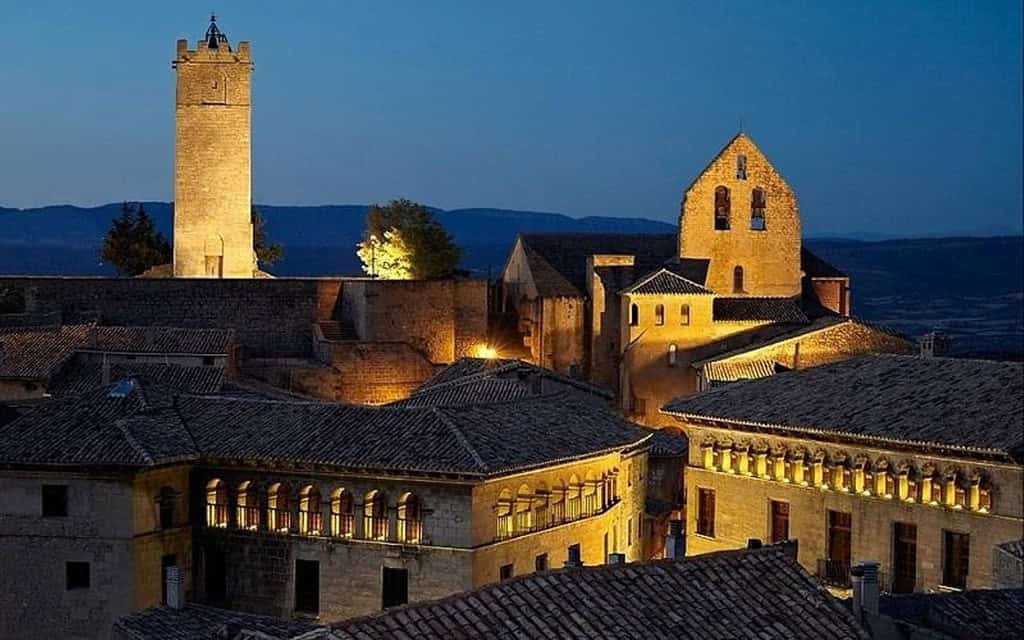
What Exactly Are Paradores?
“Parador” simply means “inn” or “lodging,” but in Spain it has evolved into something more—an official network of state-run historic or culturally significant hotels. These are often buildings of heritage: castles, monasteries, palaces, convents, or traditional mansions, adapted to host guests.
The mission is dual: open historic buildings to travelers, thereby preserving them, and promote tourism that aligns with culture and local identity. Each Parador should feel like a place that owns its region—not one transplanted from somewhere generic.
They are public or semi‑public in nature (though many operate with commercial autonomy). They work under guidelines of conservation; that means sometimes tradeoffs in modernization. Think creaking doors, sloping floors, and thick walls—features rather than complaints.
A Short History of Paradores in Spain
The concept of Paradores was born in the early 20th century—during a time when Spain’s rural infrastructure was less developed and many scenic, historic buildings lay unused. The government, looking to preserve and promote cultural patrimony, decided to convert some of these underutilized buildings into lodging that would attract visitors.
Under the regime of General Franco, the network expanded significantly. The logic was often nationalistic—to root tourism in heritage and integrate remote areas. Over time, Paradores became icons of “heritage tourism” in Spain.
In the late 20th and early 21st centuries, modernization came: updating plumbing, electricity, comfort—but always with the restraint of preserving character. Today, the Parador network is mixed (some heavily modernized, some more subdued) but all marked by the same DNA: history + place.
Why Stay in a Parador?
If you stay in a Parador, you’re not simply booking a room—you’re stepping into the landscape, architecture, and local story of a place. Here’s what makes them special:
- Sense of Place: The building often is the region—hilltop fortress in Castile, a monastery near pilgrimage trails in Galicia, or a beach Parador perched on a rocky coastline.
- Architecture that Speaks: You’ll see vaulted ceilings, thick stone walls, original windows, occasionally a chapel or cloister.
- Cultural Weight: Rooms sometimes contain period furniture, local art, or historic touches you won’t find elsewhere.
- Regional Immersion: Paradores tend to promote local cuisine, use regional ingredients, encourage walks around heritage sites.
- Quiet Luxury: It’s not about glitz, but about refinement—comfort in subtlety, texture over shine.
When you leave, you don’t just take photos—you carry parts of place and history with you.
How Paradores Differ from Regular Hotels
To see their value, you need contrast with chain hotels or generic resorts:
- Context over brand: A Parador doesn’t have cookie-cutter layouts. Rooms vary. You might have sloping ceilings or uneven walls.
- Constraints as charm: There will be limitations in modernization—some rooms might lack large windows or full blackout shades.
- Non‑urban settings: Many are in remote or rural terrain, requiring extra travel time—but that’s the point.
- Conservation priority: Additions or renovations aim to preserve, not erase. So modern touches are often subtle.
- Higher per‑night baseline: Because of maintenance, historic upkeep, and uniqueness, Paradores often cost more than local guesthouses—but often less than high-end boutique heritage hotels elsewhere.
So when you choose, accept that you’re paying partly for the story and partly for the site.
Regions with Notable Paradores
Some parts of Spain have clusters of Paradores—good ones. These regions are especially rich:
- Andalusia: Granada, Córdoba, Jaén, Úbeda, Cazorla—mix of Moorish palaces, hill forts, countryside estates.
- Castilla y León: Old castles and converted mansions in Segovia, Ávila, León—deep history.
- Galicia: Especially along pilgrimage routes and coasts—Santiago de Compostela, Ferrol, Ribadeo.
- Asturias & Cantabria: Coastal fortresses and mountain lodges.
- Extremadura: Untouched landscapes, medieval villages, and bold skies—Paradores here feel wild and quiet.
- Valencian & Castilian borderlands: Rolling hills, small medieval towns, places you might otherwise skip.
Choosing a region means choosing terrain, architectural style, and flavor—so pick places you want to explore, not just stay in.
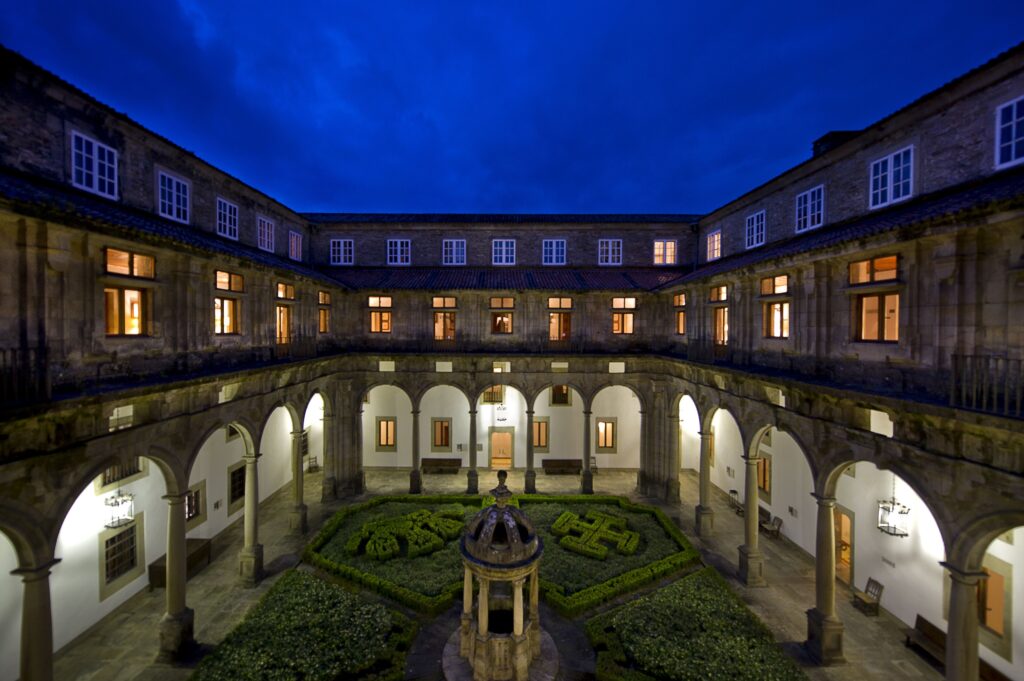
Parador Highlights (Must‑See Examples)
These standouts tend to show up in return‑visits or in traveler stories. If you had to pick one or two, these are high on my list:
- Parador de Santiago de Compostela (Galicia): Right next to the cathedral; for pilgrims arriving this feels like home. Stay on the plaza, feel centuries of footsteps around you.
- Parador de Cardona (Catalonia): A hilltop castle turned Parador. Stone towers, ramparts, views over countryside.
- Parador de Ronda (Andalusia): Built on the edge of the gorge, views that make you pause.
- Parador de Alarcón (Castilla‑La Mancha): A medieval village’s fortress converted into a quiet retreat, facing the Júcar river valley.
- Parador de Cuenca (Castilla‑La Mancha): Original medieval castle perched over dramatic cliffs.
These are classic stays. Use them as destinations, not just stops.
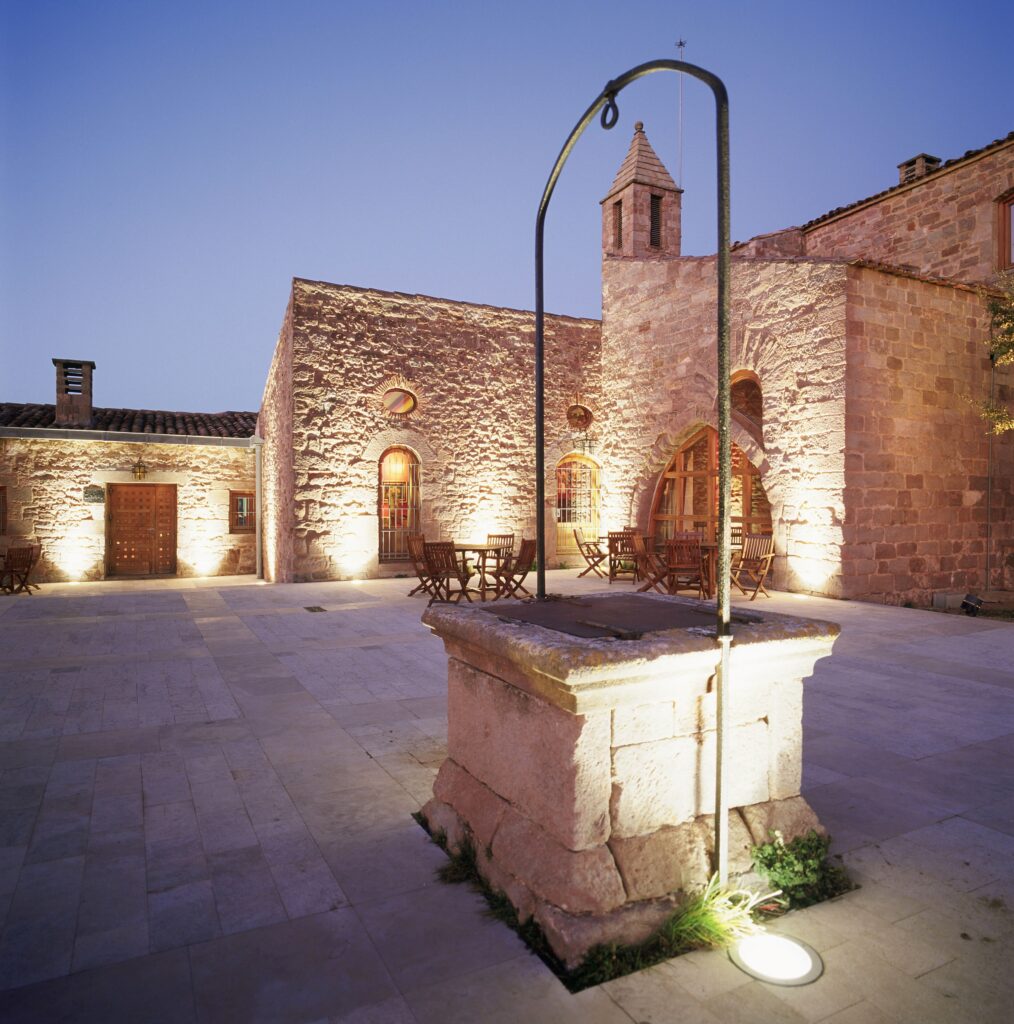
How to Choose a Parador for Your Trip
Here are criteria I use when picking:
- Location alignment: If your route passes through a historic town or site, see if there’s a Parador there. Use it as an anchor.
- Character vs comfort: Decide how much “historic quirk” you can tolerate—some Paradores retain more of their ancient bones.
- Amenities vs ambiance: Some Paradores offer full spas, modern dining, pools; others are minimal.
- Seasonal variation: A Parador with gardens is beautiful in spring; a cliffside one is dramatic in autumn.
- Pacing your route: Stay in one Parador two nights rather than hopping every night. Let the weight of place anchor your journey.
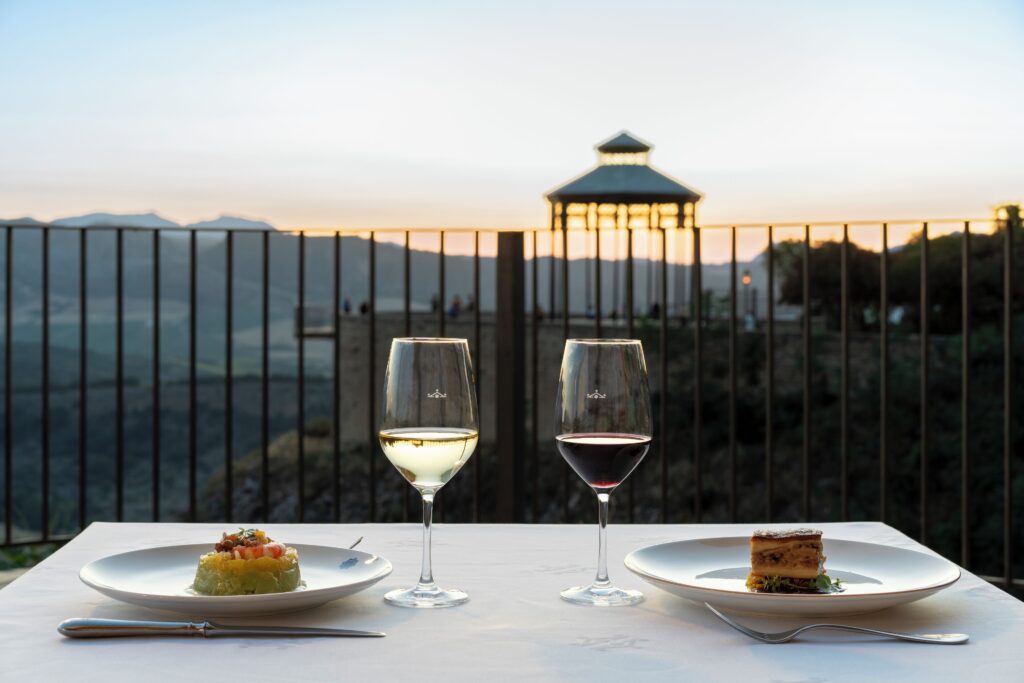
When to Stay & What to Expect
Best Seasons: Late spring (May–June) and early fall (September–October) are ideal—milder weather, fewer tourists, better light. Summer can be intense in heat. Winter brings serenity but some Paradores (especially remote ones) may close parts or reduce services.
Booking Tips: Reserve in advance for popular ones—especially near pilgrimage routes or famous towns. Look for “dinner included” options in remote Paradores (sometimes the only dining open in the evening). Ask about room orientation (valley view, courtyard, castle wall).
What to Expect: Quiet corridors, sometimes fewer modern touches, stairs rather than elevators in older wings, harvested woods or stone flooring, meals tied closely to local produce and seasonal menus.
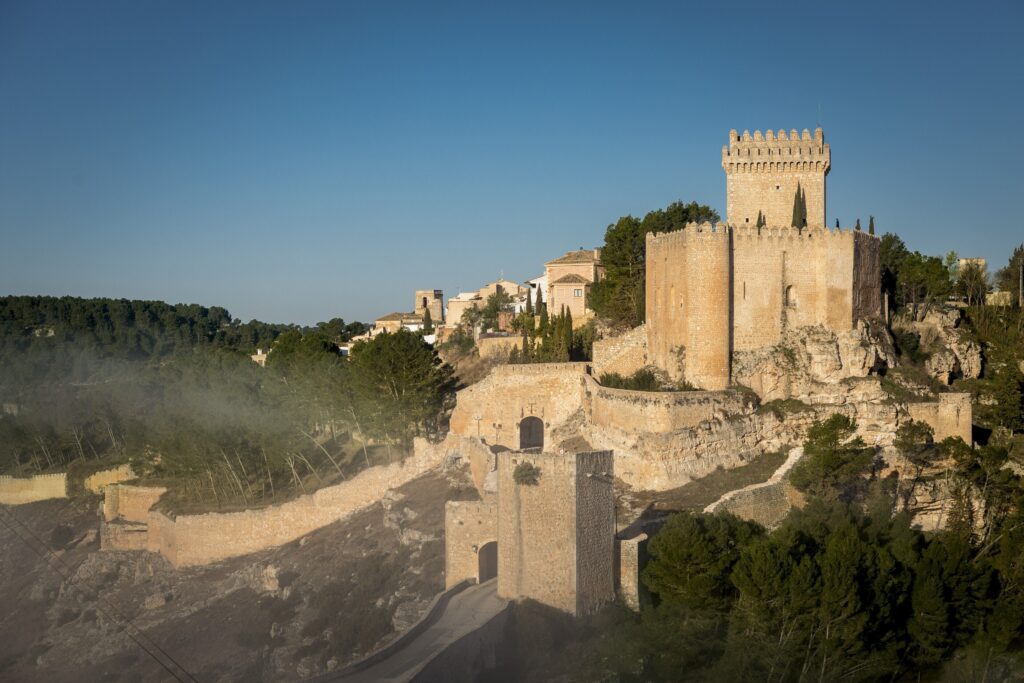
Staying at a Parador: Tips & Etiquette
- Dress respectfully in historic communal areas—no sandy flip-flops in halls.
- Try their restaurant at least once—you’re part of the conservation mission, after all.
- Learn a few Spanish phrases—staff often appreciate courtesy.
- Take your time: walk the grounds, explore corridors, read plaques.
- Be gentle: the doors, windows, and flooring are old.
- Ask about guided tours of the building or local history—they exist more often than you think.
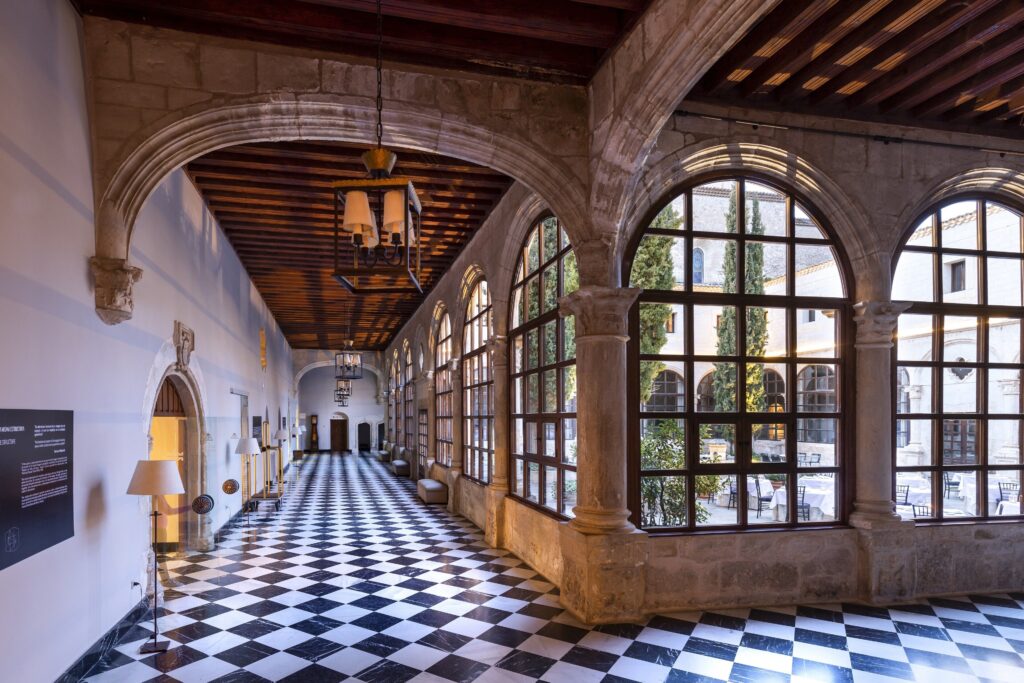
Complementary Experiences Around Paradores
The best stays come with side journeys:
- Walking trails: Many Paradores link to trails (pilgrim paths, castle walks, old roads).
- Nearby villages: Paradores often sit near towns with local festivals, markets, artisan shops.
- Food routes: Olive farms, wine estates, cheese producers—ask the Parador staff for local producers.
- Sunsets & overlooks: Many Paradores are sited for view; a late evening walk often reveals a panorama few see.
Potential Downsides & Realistic Expectations
- Room variation: Some rooms are less glamorous; not all have balconies or perfect views.
- Modernization limits: You may lack ultra-modern features (e.g. huge TV, soundproofing).
- Remote access: Some Paradores demand a winding drive or remote road.
- Cost premium: You pay partly for heritage and conservation.
- Service scaling: In off-season, services (restaurant hours, staffing) might shrink.
These are tradeoffs. Know them. And you’ll enjoy what’s unique.
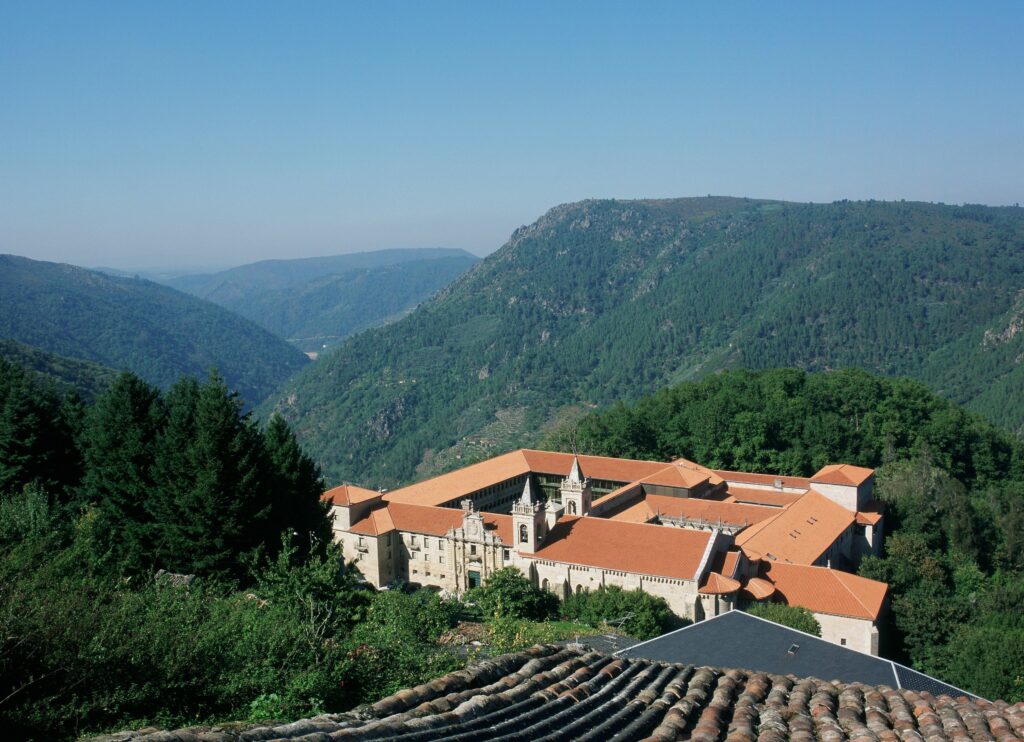
Sample Itinerary Featuring Paradores
Here’s a 5‑day route built around Paradores—ideal for someone wanting to sink into place:
Day 1: Madrid → Parador de Sigüenza
Depart Madrid early, arrive midday. Walk the medieval town. Stay in the Parador castle.
Day 2: Sigüenza → Parador de Alarcón
Drive through rural Spain. Arrive in Alarcón by afternoon. Visit the village and river valley.
Day 3: Alarcón → Parador de Cuenca
Morning in cliffs and hanging houses. Afternoon in caves / city. Stay perched overlooking cliffs.
Day 4: Cuenca → Parador de Ronda (via Andalusia)
Scenic drive, stopping in white villages en route. Arrive in Ronda for dramatic gorge views.
Day 5: Ronda → Parador de Granada (or onward)
Walk the Alhambra region, soak in Moorish history, end in a Parador within or near Granada.
You can swap regions—Galicia, Castilla, Andalucía—depending on entry point.
Paradores and Sustainable Travel
Part of the Parador ethos is conservation: using historic buildings rather than demolishing, promoting local economies, encouraging tourism to less-visited areas. Each stay often contributes to maintenance and cultural preservation. It’s a model of heritage tourism that leans local rather than global.
When you stay in a Parador, you’re not just a guest—you’re part of keeping a building alive.
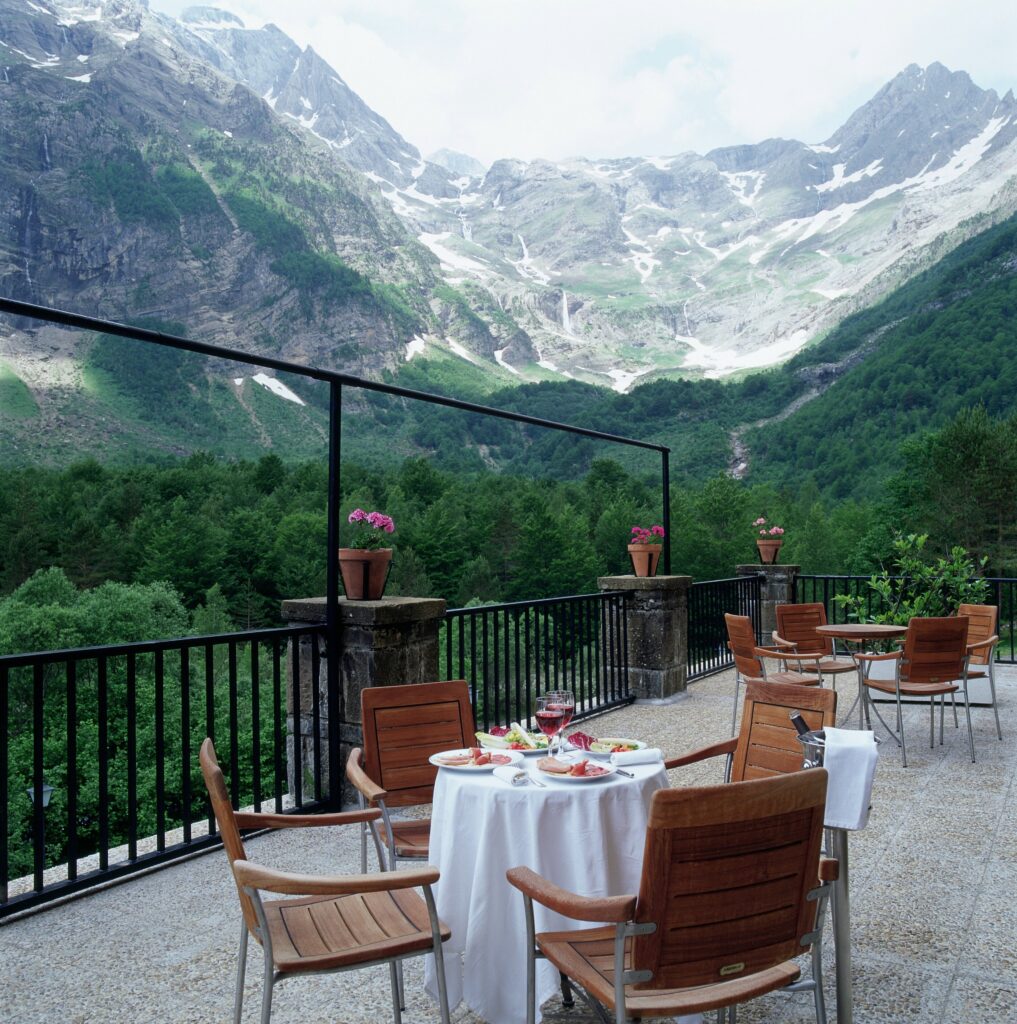
Personal Reflection: Paradores That Stay With You
I’ve stayed in a handful of Paradores—but two remain with me in a way that feels anchored, almost physical: Bielsa and Santo Estevo.
Parador de Bielsa sits deep in the Pyrenees, right at the foot of Monte Perdido. You don’t end up there by accident. The road in curls tightly through valleys, past stone villages and wild rivers, until it finally opens to a quiet building that blends into the landscape.
The stay? Simple. Honest. The kind where you hear water rushing outside your window, and the mountains do more talking than anyone at breakfast. After a day hiking trails carved by glacier and goat, I returned to hot soup, a fireplace, and a silence that felt earned.
Then there’s Parador de Santo Estevo, in Galicia. A former monastery hidden in the Ribera Sacra, wrapped in forest and mist. The cloisters are almost too cinematic—arched galleries, mossy stone, and light that filters through like it’s been there for centuries.
Rooms here carry the hush of the monks who walked before you. It’s not just quiet—it’s contemplative. I remember dinner in the vaulted dining room: slow courses, a local wine I couldn’t pronounce, and that rare sensation of not wanting to leave the table just yet.
Both places are hard to describe in bullet points. They weren’t just memorable—they recalibrated something. Slowed the pace. Let the place settle in.
Conclusion: Paradores as Spain’s Quiet Luxury
Paradores are not an afterthought in Spain—they’re part of its architectural and cultural map. They allow you to stay in history, rather than beside it. They ask little but give much: space, silence, connection, and stories.
If Spain is on your radar—its regions, its depth, its textures—then Paradores belong in your itinerary. Stay one night, or three. Wander the halls. Eat the food. Watch the light spill through ancient windows. You’ll leave not just with images, but with a sense that Spain keeps parts of itself quietly alive for those willing to slow down.
Spain Packing List
Explore expert-curated guides on the best travel accessories, noise-canceling headphones, essential safety items for solo female travelers, stylish outfit ideas for Spain, and top deals on travel gear in 2025, ensuring a seamless and well-prepared journey.
The Best Noise Cancelling Headphones for Airplane Travel
Find the best noise-canceling headphones for airplane travel, offering superior comfort, sound quality, and battery life for a peaceful journey.
The Essential Safety Items for Solo Female Travelers
Discover the essential safety items for solo female travelers to stay secure, confident, and prepared on any journey.
The Ultimate Guide to the Best Travel Accessories in 2025
Explore the ultimate guide to the best travel accessories in 2025, featuring must-have gadgets and gear for a seamless and comfortable trip.
Essential Travel Gadgets for Women: The Must-Have Tools for a Seamless Trip
Discover the essential travel gadgets for women, featuring must-have tools to enhance convenience, security, and comfort for a seamless trip.
Prime Big Deal Days: The Best Travel Gear and Deals for 2024
Discover the best travel gear and deals for 2024 during Prime Big Deal Days, featuring top discounts on must-have essentials for your next trip.
Disclaimer: The content on Must See Spain is provided “as is” with no guarantees of accuracy, reliability, or suitability. Travel involves risks, including injury, illness, theft, or unexpected events. Must See Spain is not responsible for any issues encountered during your travels. Always verify information independently and check local sources before making plans.

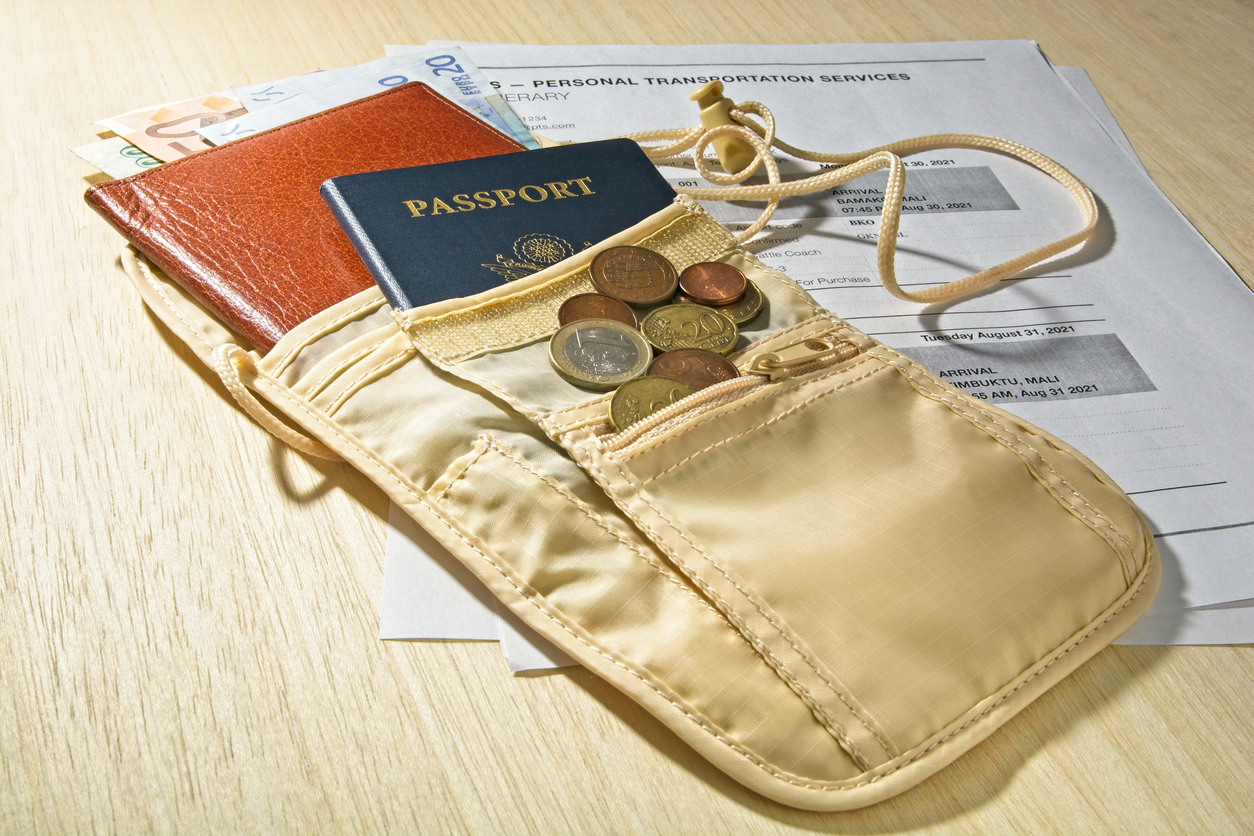


Comments Off on How to Choose the Perfect Parador in Spain for Your Journey